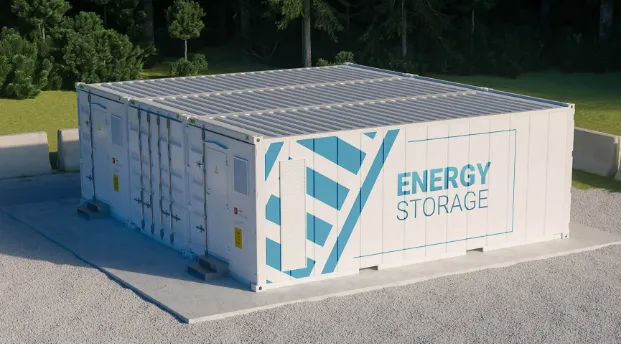In recent years, with the increasing emphasis on energy conservation and the development of renewable energy sources, home energy storage systems have gained significant popularity. Among various energy storage options, lithium - ion batteries have emerged as a leading choice due to their high energy density, long cycle life, and relatively low self - discharge rate. However, a fundamental question that arises is whether lithium - battery charging and discharging equipment is essential for home energy storage setups.

The Function of Charging and Discharging Equipment
Charging Process
Lithium - battery charging equipment plays a crucial role in replenishing the energy stored in the batteries. When connected to a power source, such as the grid during off - peak hours or a renewable energy generator like solar panels, the charger regulates the electrical current and voltage supplied to the lithium - ion batteries. This is of utmost importance because lithium - ion batteries are sensitive to over - charging. Over - charging can lead to a significant reduction in battery lifespan, as well as pose safety risks such as thermal runaway and potential fire hazards. A well - designed charger ensures that the batteries are charged at an optimal rate, maintaining the integrity of the battery cells and maximizing their long - term performance. For example, in a home with solar panels, the charging equipment can intelligently control the charging process based on the amount of electricity generated by the panels, ensuring that the excess solar energy is efficiently stored in the lithium - ion batteries.
Discharging Process
On the other hand, discharging equipment is responsible for releasing the stored energy from the lithium - ion batteries to power household appliances. It manages the discharge rate, ensuring a stable and consistent power supply. In a home energy storage system, the discharging equipment needs to be able to adapt to the varying power demands of different appliances. For instance, high - power - consuming devices like air conditioners or electric ovens require a higher discharge rate compared to low - power devices such as LED lights or smartphones. The discharging equipment also monitors the state of charge (SoC) of the batteries. As the batteries discharge, the SoC decreases, and the discharging equipment can cut off the power supply when the SoC reaches a pre - set minimum level to prevent over - discharging, which can also damage the batteries.
Benefits of Using Charging and Discharging Equipment
Energy Management and Cost Savings
With the help of lithium - battery charging and discharging equipment, homeowners can effectively manage their energy usage. By charging the batteries during periods of low - cost electricity, such as at night when electricity tariffs are often lower, and discharging the stored energy during peak - demand hours when electricity prices are higher, households can significantly reduce their electricity bills. In regions with time - of - use electricity rates, this strategy can lead to substantial cost savings over time. Additionally, for homes with solar panels, the charging and discharging equipment enables better utilization of the self - generated solar energy. Instead of sending excess solar power back to the grid at a relatively low feed - in tariff, the energy can be stored in the lithium - ion batteries and used later when the sun is not shining, further optimizing the home's energy consumption and reducing reliance on the grid.
Grid Independence and Reliability
In some areas, grid outages can occur frequently due to various reasons such as extreme weather conditions, maintenance issues, or overloading. A home energy storage system equipped with lithium - battery charging and discharging equipment provides a backup power source, enhancing the home's grid independence and reliability. During a power outage, the discharging equipment can quickly switch to supply power from the lithium - ion batteries, ensuring that essential household appliances, such as refrigerators, medical devices, and lighting, can continue to operate. This not only provides comfort and convenience but also has important implications for the safety and well - being of the household, especially in situations where power outages can last for an extended period.
Considerations for Homeowners
Initial Investment
One of the main considerations for homeowners when deciding whether to install lithium - battery charging and discharging equipment is the initial investment cost. The equipment, including chargers, inverters (which convert the DC power from the batteries to AC power for household use), and associated control systems, can be relatively expensive. However, it's important to view this investment in the long - term context. The potential savings in electricity bills over the lifespan of the equipment, as well as the added benefits of grid independence and backup power, can offset the initial cost. Additionally, as technology advances and economies of scale come into play, the cost of lithium - battery charging and discharging equipment is gradually decreasing, making it more accessible to a wider range of homeowners.
Compatibility and System Integration
Another crucial factor is the compatibility of the charging and discharging equipment with the lithium - ion batteries and other components of the home energy storage system. Different lithium - ion batteries have specific charging and discharging requirements, and the equipment needs to be designed to meet these requirements precisely. Moreover, for homes with existing renewable energy systems or electrical infrastructure, ensuring seamless integration of the new charging and discharging equipment can be a complex task. It may require professional installation and configuration to ensure that all components work together harmoniously and efficiently.
In conclusion, lithium - battery charging and discharging equipment is an essential component of a home energy storage system. It enables efficient charging and discharging of lithium - ion batteries, providing numerous benefits such as energy management, cost savings, grid independence, and reliability. While there are initial investment and compatibility considerations, the long - term advantages far outweigh the drawbacks. As the demand for sustainable and reliable home energy solutions continues to grow, the use of lithium - battery charging and discharging equipment in the home energy storage field is likely to become even more prevalent.



